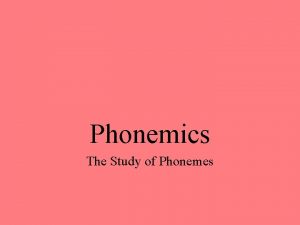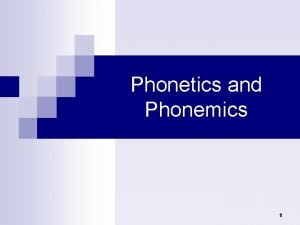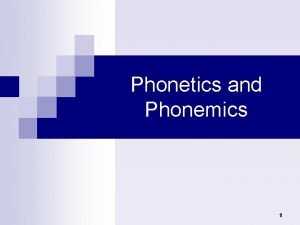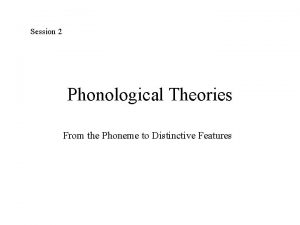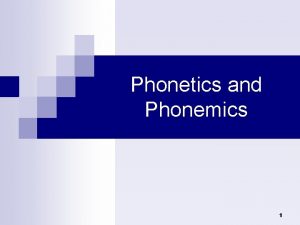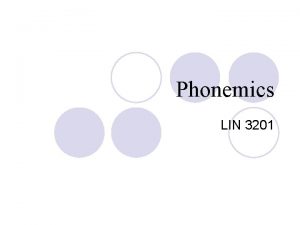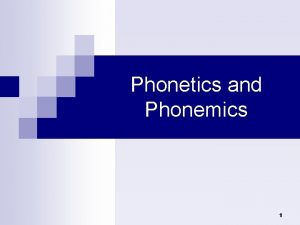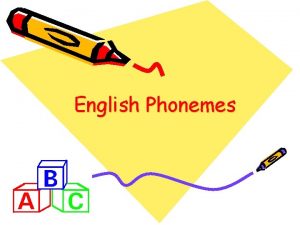Phonemics The Study of Phonemes Definition of Phoneme











- Slides: 11

Phonemics The Study of Phonemes

Definition of Phoneme • A minimal class of phones which possess shared features that clearly contrast to those of other phonemes and form the basis of distinguishing one utterance from another.

Most Languages have 50 or fewer phonemes. No language uses all possible phonemes The phones contained in corresponding phonenemes in different languages may vary significantly.

Phonemic Categories Differ from One Language to Another In English, trilled and untrilled r’s are in the same phoneme. In Spanish, trilled and untrilled r’s are in different phonemes. pero vs. perro In English b and v are in different phonemes. berry vs. very In Spanish, b and v are in the same phoneme. In English r and l anre in different phonemes river vs. liver In Chinese r and l are in the same phoneme

Allophones Definition: Phones that occupy the same phoneme are called allophones.

Goals of a Phonemic Analysis 1. To identify a minimal set of phonemes for the language 2. To identify which phones from the language are classified together in a given phoneme as allophones 3. To identify the contexts in which a given allophone will be used instead of others in the same phoneme

Kinds of Allophones Free variation allophones Complementary distribution allophones

Free Variation Allophones Where the use of a particular allophone overlaps with the use of others Two sounds are used indiscriminately in different phonetic contexts

Complementary Distribution Allophones Two allophones are in complementary distribution if the contexts in which they appear do not overlap. Two sounds are never used in the same phonetic context.

Kinds of Phonetic Context Some Examples • Immediate context = the sounds which immediately precede and follow the allophone • The stress of the sounds that follow or precede the allophone • Whether the allophone begins or ends a word • When the allophone begins a word, the sound with which the word preceding the allophone ends • When the allophone ends a word, the sound with which the word following the allophone begins

Immediate Context Example She vs. Shoe The vowel following the “sh” sound changes the way the sound is made. The two “sh” sounds are allophones of the same phoneme, but are used in different contexts, one following the “oo” and one following the “ee” sound.
